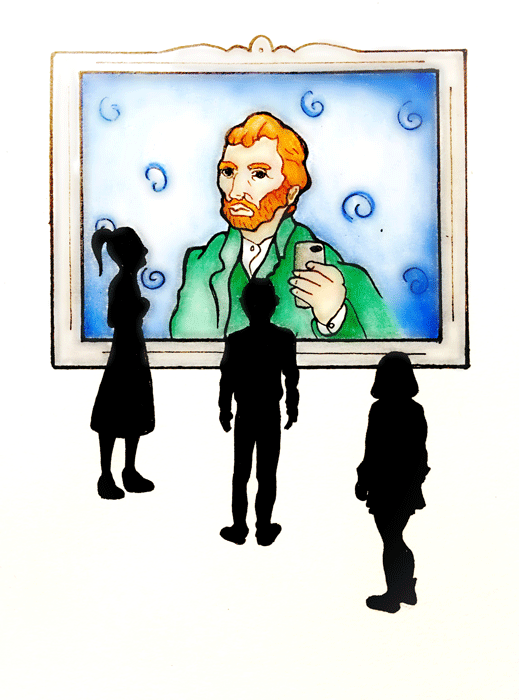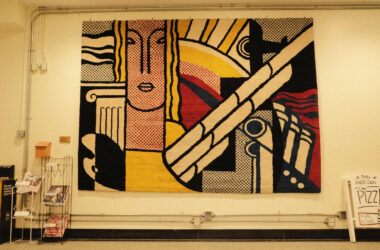Since the boom of social media, selfies have gained widespread popularity. It is an art form that is rarely given credibility, often being touted as evidence of the milennial’s supposed narcissism.
Last week, Hypotheses, an arts symposium, hosted a conferenced called “Posting The Self(i.e.): Performing Bodies and Post-Internet Art” at the Montreal Museum of Fine Arts. At the event, Marina Merlo, PhD Candidate in Film Studies at Université de Montréal, and Estelle Wathieu, M.A. Candidate in Art History at Concordia University, presented their papers, opening up a discussion about performative aspects in photographic selfies and post-Internet art.
In her paper, titled “Performance and Gesture in Selfies: Excellences and Perfections,” Merlo discusses Amalia Ulman’s 2014 work called Excellences and Perfections. In Ulman’s work, which was referred to by The Telegraph as being the “first Instagram masterpiece,” the artist performed and photographed a changing persona, and documented it through photos uploaded on an Instagram account. First, she presented a character of an aspiring artist, then a sugarbaby undergoing various issues, such as drug abuse and self-harm, and then showcased a phase of rehabilitation to become a character who enjoys fitness and travelling.
Merlo points out that Ulman’s project is a niche case study regarding concepts related to selfies, such female body image, celebrity culture, and authenticity. However, through her paper and her presentation at the conference, Merlo postured that that Ulman’s “selfie” photos, which are mainly taken in front of mirrors, were not traditional selfies.
“To readily identify a basic or traditional selfie, I argue that two things are important,” said Merlo. “Firstly, the photographer looks knowingly into the camera lens, and secondly, the photographic gesture must be very obvious. It must be clear that the photograph was purposely taken by the person in the picture [….] Considering these criteria, ‘Excellences and Perfections’ does not feature any traditional selfies. [For example] a self-portrait taken in the mirror makes the photographic gesture much less obvious, and the bodily interaction with the camera is drastically modified.”
In dissecting these differences, Merlo argues that a selfie is a voluntary and deliberate action. Through exploring the performative nature of selfies, she proposes that the common conception of the narcissistic nature of selfies is complicated.
Merlo noted the difference between the selfie phenomenon and the myth of Narcissus, in which the Greek hunter falls in love with the image of himself in a reflecting pool. Although Narcissus is seeing his own image, at first he doesn’t recognize himself.
“Narcissus is, therefore, othered as an image to a point that he believes it is someone else he is seeing [….]” Merlo said. “This form of mythical narcissism does not properly describe what is happening in a selfie, the selfie is always a voluntary action, just like for a performative utterance [….] [A selfie] can’t be an accidental photograph. This is very unlike what Narcissus is doing.”
Wathieu also brought up the topic of selfies in her paper entitled, “From ‘teen-girl tumblr aesthetic' to 'selfie feminism': evolution of the discourse around a complex and ever-evolving network of artists." She postured that the photography of Petra Collins portrays the experiences of racialized women through the lens of white women, thereby reducing the political potential of intersectionality in their project.
In analyzing their work and the political activism behind selfies, Wathieu brought up the topic of selfie feminism. She discussed the 2016 essay Closing the Loop by Aria Dean, where the writer claims that the selfie’s political impact as an act of feminism is limited as the “compounded male, white, and colonialist gazes blur Black women and femmes into oblivion.” Wathieu believes that the act of female self-imaging on the internet is not a cohesive movement that can be analyzed.
“While I agree on [Dean’s] arguments [….] I believe that [her] vision was biased, as soon as she named her object of study, selfie feminism, reducing it to politics of representation,” she said. “What I would like to propose today is to reposit this discourse […] and to propose a vision of this body of work as an ever-evolving and complex network more than as a fixed canon.”
Wathieu and Merlo presented different ideas about what a selfie is, and the role it plays in representation and feminine identity. It is clear that selfies are much more than a syndrome of millenial narcissism, and a practice that is difficult to define in current social and political contexts.
Errata: An earlier version of this article incorrectly named Estelle Wathieu’s paper as "Intersectionality and Post-Internet Art: Petra Collins and Lula Hyers” instead of the correct title, which is “From ‘teen-girl tumblr aesthetic' to 'selfie feminism': evolution of the discourse around a complex and ever-evolving network of artists." Furthermore, the earlier version incorrectly associated a point Wathieu made about the political potential of intersectionality of the works of Petra Collins to the work of Lula Hyers as well. The McGill Tribune regrets these errors.









